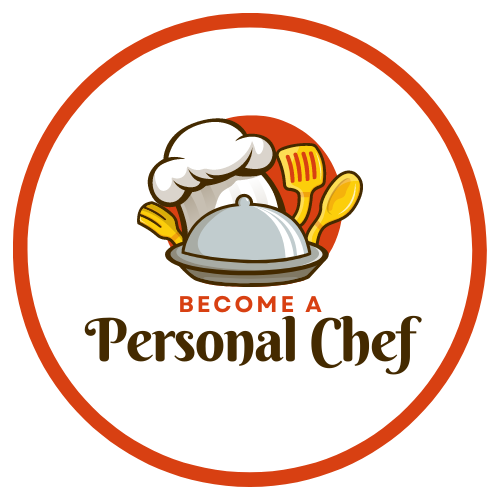Table of Contents
ToggleFrench Food for Personal Chefs
As personal chefs, our culinary journey takes us around the globe, exploring different cuisines and flavors. Today, we are venturing into the heart of Europe to explore the sophisticated world of French cuisine.
Known for its rich and indulgent flavors, French food has long been a favorite of food lovers around the world. From classic dishes like beef bourguignon and coq au vin to lighter options like ratatouille and niçoise salad, our French-inspired menu offers something for everyone.
Aspiring personal chefs need to offer something different than traditional chefs who specialize in one or two kinds of cuisines. I’ve written an extensive article with links to many cuisines for your consideration – World Cuisine for Personal Chefs
Key Ingredients in French Cuisine
French cuisine is characterized by its use of fresh, local ingredients that reflect the country’s varied geography and climate. Some of the key ingredients include butter, cheese, wine, olive oil, garlic, Dijon mustard, flour, beef, various herbs such as rosemary, thyme, oregano, lavender, tarragon, and of course, the humble mushroom. These ingredients are essential in adding depth and flavor to traditional French dishes.
Butter is a staple in French cuisine, used liberally in sauces, pastries, and as a finishing touch on dishes. The type of butter used can vary from salted to unsalted, with the latter being more commonly used for cooking. The rich, creamy texture of butter adds richness and depth to sauces like béchamel or hollandaise.
Another key ingredient in French cuisine is cheese. France has over 400 different types of cheese, each with its own distinct taste and texture. Cheese is often served as an appetizer or as a final course after dessert. Some popular varieties include Brie, Camembert, Roquefort, and Comté. It is also commonly used in dishes such as quiches, soufflés, and gratins.
Herbs and spices are crucial components in French cooking. The most commonly used herbs include parsley, thyme, rosemary, and tarragon. These give dishes a fresh and aromatic flavor. Spices like nutmeg, cinnamon, and saffron are also used sparingly to add depth of flavor to certain dishes.
Wine is an integral part of French culture and cuisine. Not only is it enjoyed as a drink, but it is also widely used in cooking. Red wine is often added to stews or braised dishes for its rich flavor while white wine is used for pan sauces or marinades. Champagne is also popularly used in sauces and desserts.
Aside from wine, French cooking also makes use of vinegar to add a touch of acidity to dishes. Commonly used varieties include red wine vinegar, white wine vinegar, and balsamic vinegar.
French cuisine is known for its rich, creamy sauces. These are made by combining butter with flour to make a roux, then adding stock or cream and flavorings like herbs or mustard. The result is a velvety sauce that pairs perfectly with meats, vegetables, and pasta dishes.
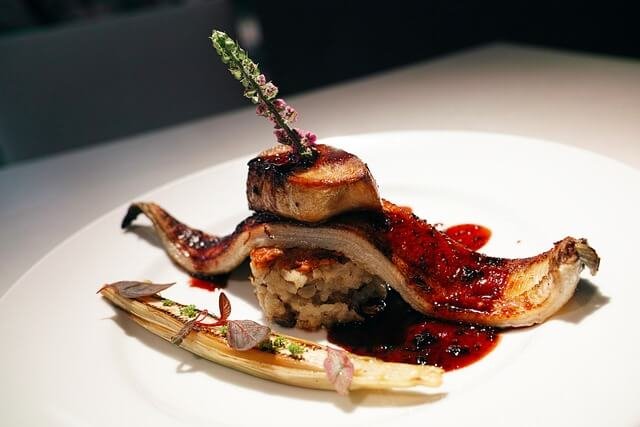
Sourcing Ingredients Locally
While many of these ingredients can be found in local supermarkets, some might require a visit to a specialty French or European grocery store. If certain ingredients are not available locally, suitable substitutes can often be found. It is important to use the freshest and highest quality ingredients for optimal flavor and nutrition.
We believe in sourcing our ingredients locally whenever possible. Not only does this support the local economy, but it also allows us to have a direct relationship with our farmers and producers. We take great care in selecting our ingredients, making sure they are organic, sustainable, and free from any harmful chemicals or additives.
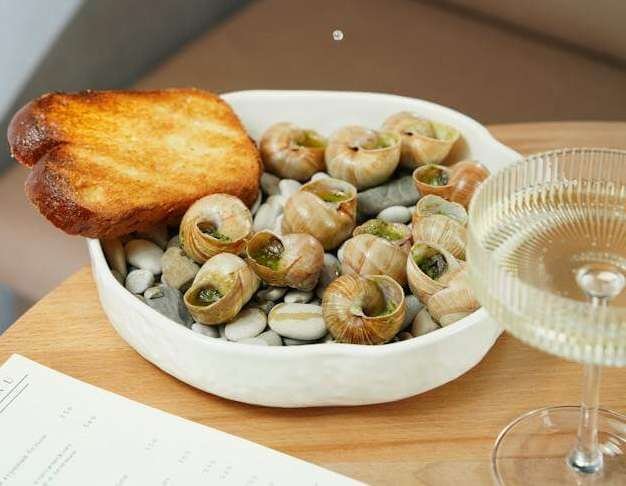
Traditional Cooking Methods
French cuisine employs a variety of cooking methods, with a heavy emphasis on sautéing, baking, and finishing sauces with butter for added richness. These traditional techniques have been passed down through generations and are still widely used in modern French cooking.
Sautéing involves cooking food quickly in a small amount of hot oil or butter. This method is perfect for delicate ingredients such as fish or vegetables, as it allows them to cook evenly without becoming overdone. Sautéing also creates a nice caramelized exterior for added flavor.
Baking, on the other hand, involves cooking food slowly in an oven at a consistent temperature. This method is great for larger cuts of meat such as roasts or whole chickens, as well as hearty dishes like casseroles or breads. Baking allows the flavors to meld together and creates a tender and juicy end result.
One signature aspect of French cuisine is the use of rich and flavorful sauces. These sauces are often made with a base of butter, cream, or wine and are then combined with various herbs and spices to create complex and delicious flavors. Some classic French sauces include béchamel, hollandaise, and béarnaise.
Another key component of French cooking is the emphasis on using fresh, high-quality ingredients. This includes locally sourced produce, meats, and dairy products that are in season. The French believe that using the freshest ingredients not only enhances the flavor of the dish but also supports local farmers and promotes sustainability.
In addition to sauces and fresh ingredients, French cuisine is also known for its use of herbs and spices. Herbs such as thyme, parsley, tarragon, and chives are commonly used to add layers of flavor to dishes. Spices like cinnamon, nutmeg, and clove are also used in savory dishes to add depth and complexity.

Dominant Flavors of French Cuisine
French cuisine is known for its depth, richness, and flavor, thanks to the generous use of butter, cheese, wine, olive oil, garlic, fresh herbs, and Dijon mustard. Despite these rich ingredients, French cuisine maintains a balance of flavors, ensuring that no one flavor overpowers another. This balance is what makes French dishes so delectable and admired around the world. In this article, we will explore some of the dominant flavors that define French cuisine.
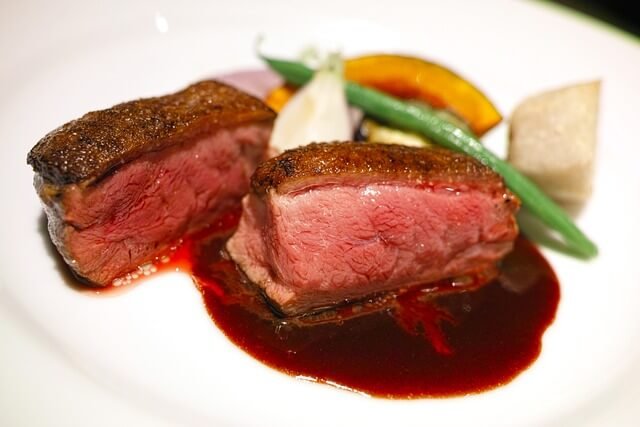
Spice Level Adjustment
French cuisine is typically not spicy. However, the spice level can usually be adjusted to suit your client’s preference by using less of the spicy ingredient or eliminating it altogether. This is a great opportunity for you to customize your dish and make it unique for each client. As an organic personal chef, we understand that everyone has their own taste preferences and dietary restrictions. That’s why we offer the option of adjusting the spice level in our dishes.
Our approach to spice level adjustment is simple – we believe in using fresh, high-quality ingredients that bring out the natural flavors in our dishes. Instead of relying on heavy spices and sauces, we let the freshness and quality of our ingredients shine through. However, if a client requests for a dish to be spicier or less spicy, we are more than happy to accommodate their preferences.

Cultural Significance of French Cuisine
French cuisine has a rich history dating back centuries. It is often seen as the pinnacle of all cooking due to its sophisticated techniques and high-quality ingredients. This cuisine is deeply rooted in French culture and has had a major influence on food around the world.
The Beginnings of French Cuisine
French cuisine can be traced back to the Middle Ages when monks and nuns were responsible for cooking meals for their communities. They used local ingredients such as vegetables, herbs, and grains to create dishes that were simple yet full of flavor. As trade routes opened up, new spices and ingredients were introduced, adding more depth to French cooking.
In the 17th century, King Louis XIV established France as a center of gastronomy by inviting notable chefs from Italy to come and cook for him. These chefs brought with them new techniques and recipes that elevated French cuisine even further.
Influence on Global Cuisine
As French cuisine continued to evolve, it began to spread across the globe. French cooking techniques and recipes have had a major influence on many other cuisines around the world. For example, sauces such as hollandaise and béchamel are used in many international dishes.
French cuisine is also known for its focus on high-quality ingredients and attention to detail in preparation and presentation. This emphasis on quality has influenced chefs all over the world to prioritize using fresh, local ingredients and paying close attention to the aesthetics of their dishes.
The Importance of Regional Cuisine
One aspect that makes French cuisine so diverse and rich is its regional variations. Each region in France has its own unique dishes and ingredients based on local produce, traditions, and cultural influences.
For example, Provence is known for its use of herbs like thyme, rosemary, and lavender in dishes such as ratatouille and bouillabaisse. In Normandy, apples are a common ingredient used in dishes such as tarte tatin and cider-based sauces for meats. And in the south-western region of Gascony, duck is a staple protein and is often used in dishes like confit de canard.
This emphasis on regional cuisine not only adds diversity to French cooking but also showcases the importance of using fresh, local ingredients that are specific to each region’s terroir (the unique characteristics of the land). This concept has been adopted by many other cuisines around the world, highlighting the influence and impact of French cuisine on global culinary practices.
Another key aspect of French cooking is the use of rich, luxurious ingredients such as butter, cream, and cheese. This can be seen in iconic dishes like coq au vin (chicken braised in red wine and served with a rich sauce), gratins (baked dishes with a crispy top layer of cheese), and quiches (savory tarts filled with creamy custard and ingredients like ham or vegetables). These indulgent ingredients add depth and flavor to dishes, making them comforting and satisfying.
However, it’s not all about heavy creams and sauces in French cuisine. In recent years, there has been a trend towards lighter, healthier options that still maintain the traditional flavors and techniques of French cooking. This includes incorporating more fresh herbs, vegetables, and leaner proteins like seafood into dishes. It’s a balance of indulgence and health that truly represents the French approach to food.

Dietary Considerations
When preparing French cuisine, it’s important to consider dietary restrictions. Many French dishes can be adapted to be vegetarian-friendly, and gluten-free options are also available. I understand that dietary restrictions are a major consideration for many people, and as your personal chef, I am dedicated to accommodating them.
Vegetarian Options
For vegetarian clients, I offer a variety of plant-based dishes inspired by classic French cuisine. Ratatouille is a popular choice, made with fresh vegetables such as eggplant, zucchini, and bell peppers. It can be served as a main dish or as a side to accompany other French favorites like mushroom bourguignon or lentil cassoulet. Other options include vegetable quiches and risottos packed with seasonal vegetables.
Gluten-Free Adaptations
With more and more people following gluten-free diets for health reasons, it’s important to have options available for those who need them. As a personal chef, I am well-versed in creating delicious gluten-free meals without sacrificing taste or texture. Some menu items that can easily be adapted include coq au vin (using a gluten-free flour for thickening), beef bourguignon (served with gluten-free pasta instead of traditional noodles), and even classic French pastries like macarons made with almond flour.
Dairy-Free Substitutions
For clients who are lactose intolerant or follow a dairy-free diet, I have options to cater to their needs as well. While traditional French cuisine uses a lot of butter and cream, I can make substitutions using alternative dairy products such as coconut milk or cashew cheese. For example, my creamy mushroom soup is typically made with heavy cream, but I can easily swap it out for coconut milk and it still has a rich and satisfying taste.
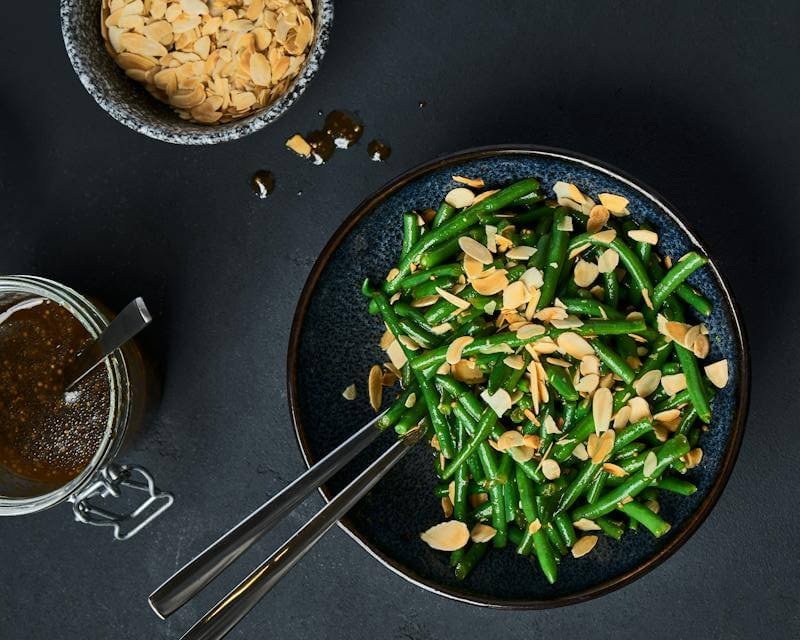
Health Considerations
While French cuisine is known for its richness, it can also be modified to be healthier without losing its authenticity. This can be achieved by using less butter and cheese or substituting with healthier alternatives.
Using local and organic ingredients, our chefs create dishes that are nutritious and full of flavor. By using fresh seasonal produce, we ensure that our meals are packed with essential vitamins and minerals. We also offer vegetarian and vegan options for those with dietary restrictions or preferences.

Traditional Accompaniments
A traditional French meal often includes a variety of dishes served with bread. Desserts often feature pastries and chocolates, while popular drinks include wine and cognac. Meals are typically served with a side of bread, which can be used to soak up sauces and flavors. These accompaniments not only enhance the meal, but also add an element of tradition and culture to the dining experience.
Bread is considered a staple in French cuisine, especially in traditional meals. It is often served as a side dish or used as a utensil to sop up flavorful sauces or dips. Baguettes, boules, and croissants are popular choices for bread accompaniments. They are freshly baked and have a crisp crust with a soft interior that pairs well with almost any dish.
Along with bread, cheese is another essential accompaniment in French cuisine. France is known for its vast array of cheeses, from creamy brie to tangy Roquefort. Cheese is often served on a cheese platter as an appetizer or used in dishes such as quiches, croissants, and gratins.
In addition, French meals are typically accompanied by a glass of wine. Wine plays a significant role in French culture and is considered an essential part of the dining experience. From rich reds to crisp whites, there is a wine for every taste and dish in French cuisine.
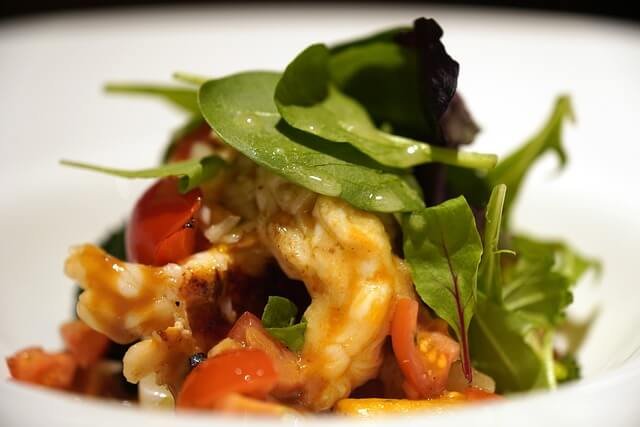
Presentation
In French cuisine, the presentation is elegant and refined, with an emphasis on the artistry of the dish rather than the quantity. Each dish is thoughtfully and carefully prepared, with a focus on using fresh, organic ingredients to create visually stunning plates.

Common Variations
France’s diverse regions each have their unique flavors and dishes. For example, the region of Provence is known for its herbes de Provence, while Burgundy is famous for its beef bourguignon. Some common variations of French cuisine include:
1. Classic French
The first thing that comes to mind when we think of French food is the classic dishes such as croissants, baguettes, and coq au vin. This style of cooking uses traditional methods and ingredients, with a focus on rich flavors and elegant presentation.
2. Haute Cuisine
Haute cuisine, also known as “high cuisine,” is a refined and elaborate style of French cooking that is typically found in upscale restaurants. It involves using high-quality ingredients and intricate techniques to create complex and visually stunning dishes.
3. Bistro Fare
Bistros are casual dining establishments that serve simple yet delicious meals at affordable prices. The bistro-style of cooking focuses on using seasonal and local ingredients to create rustic and hearty dishes, such as beef bourguignon and ratatouille.
4. Regional Specialties
France is a country with diverse regional cuisines, each with its own distinct flavors and techniques. For example, the cuisine in Provence is heavily influenced by Mediterranean ingredients like olive oil, herbs, and seafood. In Alsace, you’ll find dishes that are more Germanic in nature, such as sauerkraut and sausages.
5. Emphasis on Fresh Ingredients
In French cooking, there is a strong emphasis on using fresh and locally sourced ingredients. This not only ensures the highest quality of flavor but also supports local farmers and promotes sustainable practices.
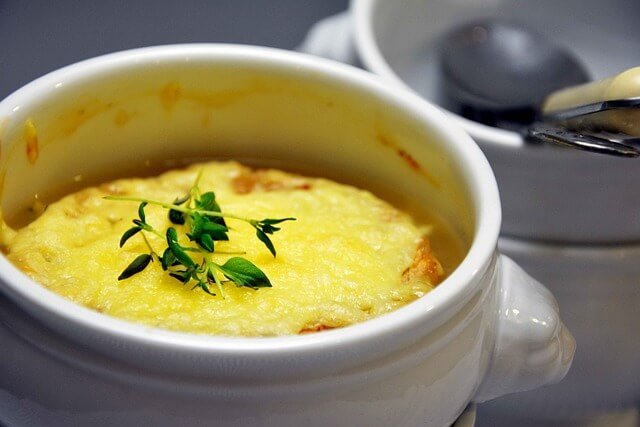
Preparation and Equipment
Some French dishes may require specific equipment, like a Dutch oven for slow-cooking stews or a mandoline for slicing vegetables. Certain elements of a dish, like marinated meats or soaked legumes, may need to be prepared ahead of time.
Here’s a collection of common kitchen tools needed for a cook date featuring French Cuisine:
Chef’s Knife: A high-quality chef’s knife is essential for precise cutting and chopping. It’s versatile and can be used for slicing vegetables, meats, and herbs.
Paring Knife: This small knife is ideal for intricate tasks like peeling, deseeding, and other fine work.
Sauté Pan: A sauté pan with a lid is perfect for browning meat, making sauces, and of course, sautéing. The high sides prevent splattering, and the even heat distribution is great for cooking delicate dishes.
Dutch Oven: An essential for slow-cooked dishes like cassoulets or coq au vin, Dutch ovens retain heat well and allow for even cooking.
Cast Iron Skillet: Ideal for searing meats to achieve a perfect crust, this tool is also great for a variety of tasks from sautéing to oven-baking.
Roasting Pan: A must-have for preparing classic French dishes like roast chicken or beef bourguignon.
Saucepan: Used for making sauces, boiling eggs, or heating liquids. A small and a medium-sized saucepan would cover most needs.
Stockpot: Perfect for preparing stocks, boiling pasta, or making soups.
Mandoline: This slicer is used for making perfectly thin slices of vegetables for dishes like ratatouille or gratin dauphinois.
Whisk: Essential for emulsifying salad dressings, beating egg whites for meringues, and stirring sauces.
Wooden Spoon: Great for stirring and doesn’t react with acidic ingredients.
Tongs: Useful for turning meats, tossing salads, and serving.
Chinois Strainer: A very fine mesh strainer used for achieving silky smooth sauces and custards.
Pastry Brush: Used for brushing egg wash on pastries or oiling bakeware.
Copper Mixing Bowls: Ideal for whipping egg whites as the copper reacts with the egg whites making them more stable.
Measuring Cups and Spoons: Precise measurements are essential in French cuisine.
Baking Sheets and Dishes: For everything from roasting vegetables to baking pastries.
Remember, good quality tools can significantly enhance your cooking experience and the outcome of your dishes. Invest wisely and maintain your tools well to enjoy the best results.
Wondering what tools a personal chef might need? I’ve written an extensive article for you – A Comprehensive List Of Must-Have Tools and Essential Items for the Personal Chef
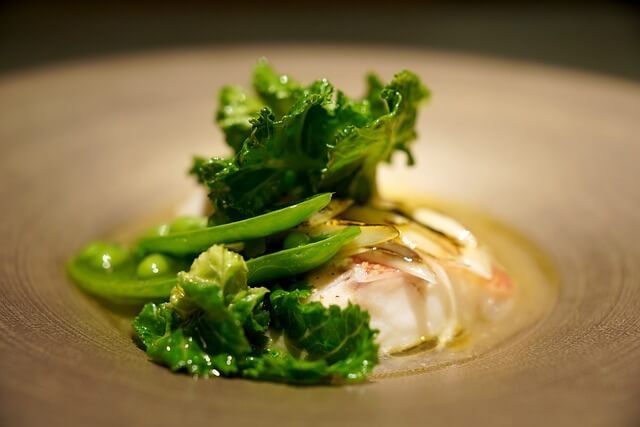
Personalizing French Cuisine
Personalizing French dishes while maintaining authenticity can be achieved by adjusting flavors to suit personal preferences, substituting ingredients based on dietary needs, or presenting dishes in creative ways. This allows for a unique dining experience that is tailored to each individual’s taste buds.
French cuisine is known for its rich flavors and techniques that have been passed down through generations. However, these traditional methods can often be limiting for those with dietary restrictions or personal preferences. By personalizing French dishes, individuals can still enjoy the essence of this cuisine while making it their own.
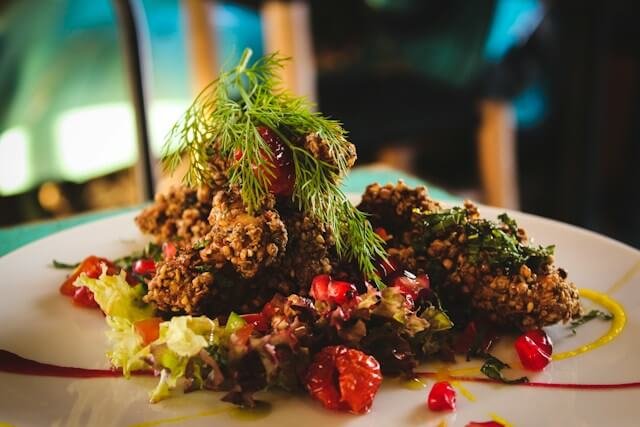
French Cuisine
In conclusion, exploring and cooking French cuisine offers an exciting culinary journey. By understanding its key ingredients, techniques, and cultural significance, we can bring the authentic taste of France to our clients’ dining tables.
Here are some of my favorite tools for providing my personal chef service
As an experienced personal chef, I’ve found that the secret to creating mouthwatering dishes goes beyond just having a passion for food. It’s also about using the right kitchen tools. Today, I’m going to share with you my must-have kitchen items that help me bring my culinary creations to life.
1. Chef’s Knife
The first item on my list is a high-quality chef’s knife. It’s the most versatile tool in my kitchen, perfect for chopping, slicing, and dicing. My preference is for a Global Chef’s Knife, known for the edge and the way they are balanced.
2. Cast Iron Skillet
Next up is a good old cast-iron skillet. From searing steaks to baking cornbread, this pan does it all. I love the Lodge Cast Iron Skillet, which retains heat beautifully and adds a nice crust to anything you cook.
3. Stainless Steel Pots and Pans
A set of stainless steel pots and pans is essential for a variety of cooking techniques. They’re great for simmering, boiling, and sautéing. All-Clad’s Stainless Steel Cookware Set is my go-to choice for its exceptional performance and durability.
4. Immersion Blender
An immersion blender makes pureeing soups, making smoothies, and blending sauces a breeze. I suggest the Braun Multiquick Hand Blender, which is powerful, easy-to-clean, and highly versatile.
5. Digital Thermometer
To ensure perfectly cooked meats every time, a digital thermometer is a must. The ThermoPro TP19 Waterproof Digital Meat Thermometer provides speedy and accurate readings, ensuring your roast chicken or prime rib is cooked to perfection.
6. Silicone Spatula
A silicone spatula is a chef’s best friend for its versatility. It’s heat-resistant, non-stick, and perfect for everything from folding batter to stirring sauces. I recommend the OXO Good Grips Silicone Spatula.
7. Stand Mixer
Lastly, for avid bakers, a stand mixer is a game-changer. The KitchenAid Artisan Series 5-Qt. Stand Mixer isn’t just a pretty face; it makes mixing doughs and batters effortless.
These are the tools that I use daily in my personal chef service. Remember, quality tools make a difference, but they don’t have to break the bank. Start with the basics and add on as you grow more comfortable and adventurous in the kitchen.
Happy cooking!
